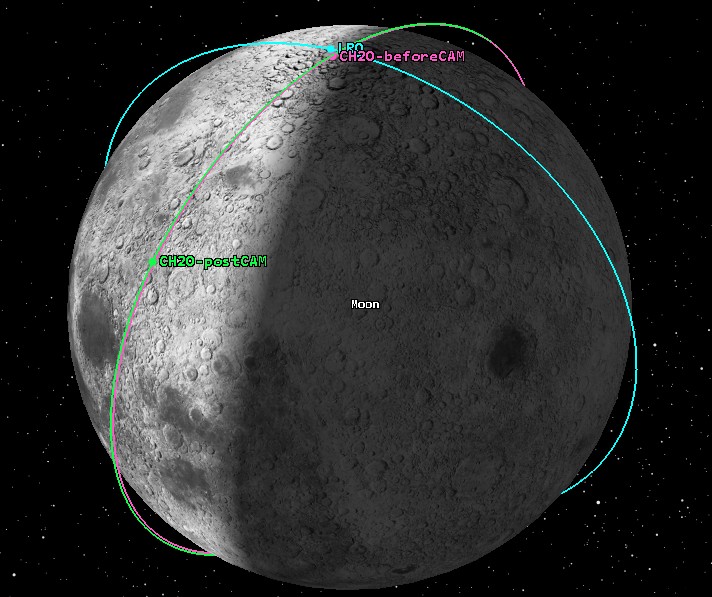In October, India's Chandrayaan-2 orbiter had to adjust its trajectory around the Moon to dodge NASA's LRO probe, according to a recent statement from the Indian Space Research Organization (ISRO).
As space debris poses more and more problems in low Earth orbit, the recent evasive maneuver of the International Space Station is an example of this, remember that the lunar orbit is also increasingly crowded. Small "tweaks" are therefore sometimes necessary. Last October, the Indian orbiter Chandrayaan-2 would have changed its trajectory to avoid approaching too close to NASA's Lunar Reconnaissance Orbiter (LRO), reported the Indian space agency (ISRO).
In mid-October, ISRO and NASA data showed that the two craft would pass uncomfortably close to each other (about three kilometers ) near the lunar north pole a few days later, on October 20 at 5:45 UTC. Over a period of one week before the conjunction, analyzes consistently showed that the radial separation between the two spacecraft would be less than one hundred meters and the closest approach distance would be only about three kilometers. /P>
The two space agencies then agreed that the Indian craft should perform an evasive maneuver on October 18 to ensure a sufficiently large radial separation at the next conjunction .
Recall that the two orbiters revolve around the Moon in a near-polar orbit, which means that they are necessarily likely to approach each other above lunar poles.
"NASA and the Indian Space Research Organization fully coordinated the maneuver by the Chandrayaan-2 spacecraft on October 18 “said Nancy Jones, NASA spokesperson. “Such coordination between space agencies is integral to ensuring the safe operation of satellites around the Moon. At no time were these two probes in danger ".

Recall that the Chandrayaan-2 space probe, launched on July 22, 2019, also took with it a small rover weighing about twenty kilos by the name of Vikram, whose objective was to land on the lunar South Pole. The following September 6, only a few meters from touching the ground, the Indian space agency had unfortunately lost contact .
A few weeks later, data from the Lunar Reconnaissance Orbiter had finally located the remains of the craft. Never mind:India will try its luck again with its Chandrayaan-3 mission in a few months.
In the meantime, only three countries have managed to land smoothly on the Moon:Russia, the United States and China.